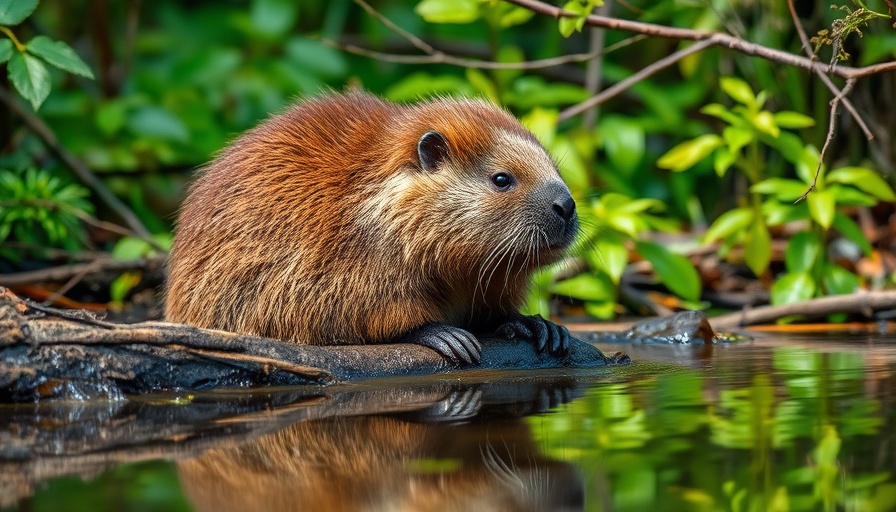
Beaver Comeback: A Double-Edged Sword for the Netherlands
The return of the beaver to the Netherlands is seen as an ecological triumph after the species faced extinction in the early 19th century. Reintroduced in 1988, the beaver population has surged to an estimated 7,000, thriving in various environments. Unlike in England, where the numbers linger at around 500, the Dutch beaver population has established itself impressively across the country; however, this environmental success comes with significant drawbacks.
Nature’s Builders Fostering Challenges
Beavers are renowned for their building and engineering skills, creating habitats that benefit many other species. Unfortunately, in the Netherlands, these skills have led to serious infrastructural concerns. Beavers are burrowing into essential infrastructures like roads, railways, and critical dykes. In a nation where approximately a quarter of the land resides below sea level, this poses a serious risk for flooding and public safety. "We've found tunnels stretching up to 17 metres into a dyke. Wide enough for a grown man to fit in. That's alarming," states Jelmer Krom from Rivierenland water board.
The Flood Risk Quandary
The problem arises particularly during flood conditions when the beavers instinctively dig their burrows to higher ground, endangering the integrity of the dykes. "When the water is really high, I’m lying in bed at night with my fingers crossed, praying the beavers aren’t wreaking havoc somewhere," shares Cindy de Jonge-Stegink, a beaver consultant. In areas where dykes are often less than 15 metres wide, the risk of tunnel collapses leading to flooding is a legitimate fear for many in the community.
Managing a Protected Species
What complicates these challenges further is the protected status of beavers in the Netherlands. The law restricts any drastic measures against them, allowing intervention only in severe situations. Even relocating problematic beavers proves futile, as they tend to return. Consequently, authorities have turned to alternative solutions, such as reinforcing riverbanks, employing meshes to deter burrowing, and regularly sealing burrows. Krom notes, "Five years ago, we had to dig out a burrow about 15 times a year. That's now escalated to 40 or 50 times a year, which is costly." The rapid rise in beaver numbers has thus significantly increased the burden on local governments.
Economic and Ecological Dilemmas
In the hilly province of Limburg, beavers cause different issues, mainly flooding agricultural areas after building dams in brook valleys. While not as catastrophic as a dyke failure, these incidents still affect the livelihoods of farmers, disrupting their daily routines and threatening their crops. Farmers have been left grappling with the dilemma of coexistence; many are experiencing the unfortunate side effects of beaver populations encroaching into their tractors and fields.
The Human Side of Beaver Encounters
Interestingly, amidst these challenges, there’s a heartwarming side to beaver encounters in the Netherlands. Families have started to embrace their beavers, with some mothers bringing children to see them at night. "I know mothers who take their children to say goodnight to the beavers before bedtime. That makes my green heart leap," shares de Jonge-Stegink. These beautiful yet complex creatures symbolize nature’s resilience; however, it's crucial for communities to balance their admiration for these animals with the practical ramifications of their return.
A Call to Embrace Sustainable Solutions
Recognizing the dual nature of the beaver's return is essential. It reminds local communities of the need for innovative, sustainable solutions for managing wildlife interactions with human infrastructures. As both nature lovers and pragmatic inhabitants of a land below sea level, residents must forge strategies that celebrate the magnificence of these creatures while ensuring the safety of their environment.
As our relationship with nature evolves, so too must our approaches to wildlife management. By embracing discussions surrounding these ecological miracles, we pave the way for solutions that could very well benefit everyone. Keep the conversation going in your community; it’s time to think about how we can nurture the coexistence of nature and humanity.
 Add Row
Add Row  Add
Add 




Write A Comment